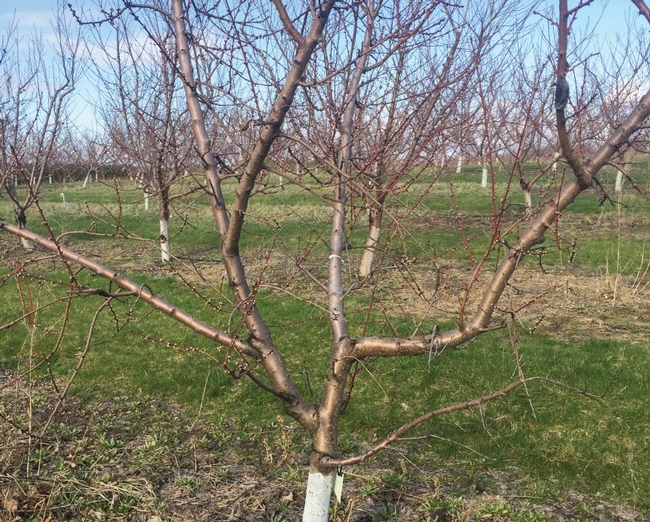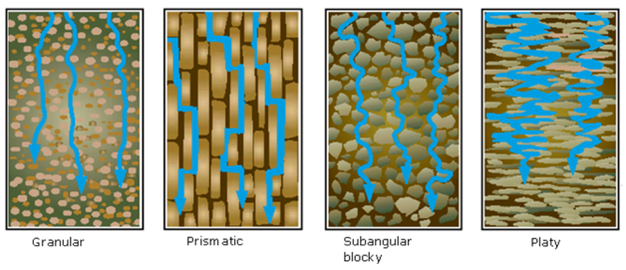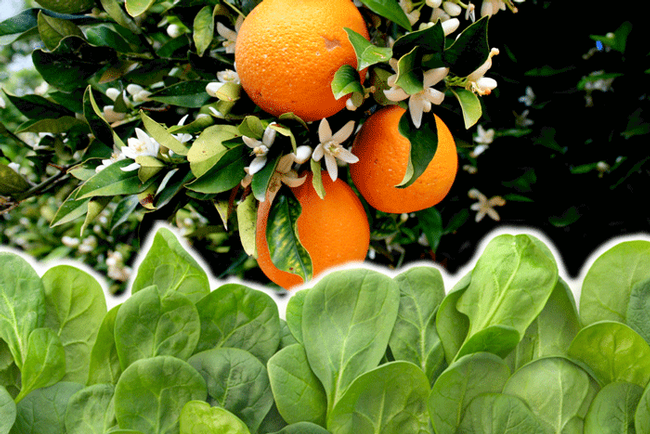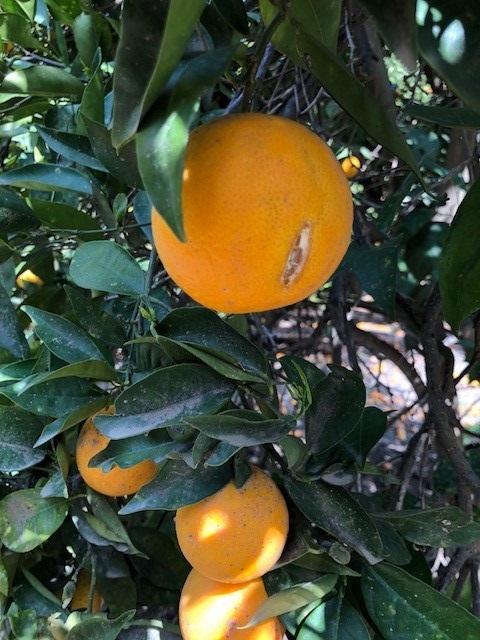
Posts Tagged: deciduous
What Winter? Not Cold Enough for Apricot, Too Warm for Valencia
So, there are peach trees right now that are flower-less and leaf-less. Wisteria which should have flowered in February is bare. The Royal apricot next door has no flower. The Lombardy poplars and birch in Oxnard don't have leaves. Spring is here, grass is growing, but many deciduous trees are still leafless and haven't flowered? What is going on?
Deciduous fruit trees and many landscape trees like poplar, birch, willow and sycamore, etc. must go through a dormant period each winter in preparation for producing fruit and leaves the following spring and summer. This rest period, also known as a chilling period, is directly related to winter temperatures. For many varieties of trees, the most efficient temperature for chilling is 45°F, with little additional chilling effect at temperatures below 32°F. Brief warm spells in winter have a negative effect — temperatures above 70°F for four or more hours offset any chilling that happened in the previous 24-36 hours.
Once chilling is complete, the trees prepare to wake up from dormancy and bud after a certain amount of warming takes place. The amount of required warming is cumulative, measured by counting the number of degrees each day above a threshold temperature, usually 40°F. This cumulative warming, combined with how well the tree met its chilling requirement over the winter, determines whether a tree buds early or late in the spring.
Tables and charts have been developed for different chilling requirements of fruit trees. The number of hours needed at or below 45°F varies with the type of tree:
- Peach: 400 to 1050 hours
- Apple: 800 to 1100 hours
- Cherry: 1000+ hours
But in coastal Southern California, those hours are never achieved. You need to go to Santa Ynez to get close to those hours. More typically in the Santa Paula, Santa Barbara, San Luis Obispo area, the chilling hours below 45 are close to 200 and lower in many years. Some years there is more, some years less. How temperatures above 70 affect chilling aren't always clear. As a result there are several different ways to account for chilling and none of them work very well for the coast./
Fortunately, we have low-chill varieties of many fruit trees that will produce with lower chilling. So ‘Anna' apple and ‘Royal' apricot do well, and many landscape trees are adapted to the lower winter chilling along the coast and do well. Low chill blueberries thrive to the point that in many years, they don't even go dormant.
This year the warm, cold, warm, cold pattern has mixed trees up. There are some deciduous trees that are doing fine, while others still have not flowered and leafed out. The mix of temperatures is not following the traditional patterns used to calculate chilling requirement. The trees are following their own pattern.
In the last several years in Southern California, winters have seemed shorter and milder, resulting in earlier springs. Trees that have flourished in a location could have decreasing yields in the future, and the favorable locations to grow these fruit trees could shift.
The Fruit and Nut Center at UC Davis has a link to the CIMIS system operated by the CA Dept of Water Resources. The site has various methods of calculating chilling hours, none of them seem adequate though for describing what is happening in the landscape today in Southern California
http://fruitsandnuts.ucdavis.edu/Weather_Services/chilling_accumulation_models/
Look at it to see if you can see a new way of understanding deciduous tree response to the weather.
Just got a call recently that 'Valencia' oranges are splitting. This normally happens to ripe 'Navels' that are over mature and get erratic winter irrigation, especially during drought. In this case, the 'Valencias' are advanced in maturity because of the warm winter, probably advanced by two months. Again erratic watering has probably lead to this splitting.
What a crazy winter.
Splitting coastal 'Valencia' oranges in April, 2018
photo: Peaches without adequate chilling.

no chill peach
Spring into Fall
The drought has caused numerous conditions – physiological and pathological – that I have only seen in text books (see our newsletter article: http://ceventura.ucanr.edu/newsletters/Topics_in_Subtropics63007.pdf). But other phenomena are also occurring. Recently I saw a field of blackberries in full bloom and the other day a grower called in about a plum tree that was also in full bloom. What is going on? This is supposed to happen late winter/early spring. It turns out that often drought stress can supplant winter chill in some plant species. In this case, these two species are relatively low chill, meaning they don't require a lot of cold to break winter bud dormancy. The drought stress causes the buds to break dormancy.
This is similar to the “Verdelli” effect in lemons. This is a technique used to shift the period of optimum fruit production to a more profitable period, usually the summer when more lemons are used. In the case of plum and blackberry and other low chill deciduous tree crops, this would be pushing production into the coldest period of the year. It might work along the coast, but in the Central Valley it would probably just mean frozen fruit. But it's a possible method that we might play with.
Photo: October, 2016

plum blooming in fall
Fruit and Nut Trees for Coastal California
It's possible to grown many other tree crops along the coast other than avocado and citrus. When speaking of other perennial evergreens like avocado, trees that don't lose their leaves but retain a canopy year round, we want trees that can handle the occasional cold periods that happen in winter. In fact, some trees like 'Hass' avocado need something like 50 hours of chilling – hours below 45 degree Fahrenheit. When trying to grow ‘Hass' in the tropics, the tree gradually loses vigor because the cold need to break dormancy of buds isn't there. So they grow tropical varieties in Florida and the Dominican Republic and consumers get used to the less oily flavor of the tropical varieties. Low or no chilling requirement fruit trees like durian, jackfruit and other tropical fruit can't handle the cold we get in coastal California. There are many different unusual fruits that can be grown, like cherimoya, sapote and mango throughout the southland.
However, if we try to grow low chill varieties of deciduous fruit that can handle winter cold, like apple and peach varieties, they often have insipid in flavor. Here's a list of fruit trees that are adapted to coastal southern California. And if you choose any of the deciduous varieties, make sure you plant them bare root next winter. They are cheaper and transplant better with less transplant shock than planting them when they are in leaf.
http://ceventura.ucanr.edu/Com_Ag/Subtropical/Fruit_and_Nut_Varieties/

peaches
Dealing with Drought
It ain't over yet, and this last week we had a wonderful 2 day meeting with folks who have dealt with drought in many different ways. Here are presentations made by people from Israel, Australia and California. Soon the actual videos will be available, but now see the powerpoints.
http://www.droughtmgt.com/#!presentations-and-documents/niui7
The grower panels are wonderful, but are not uploaded at this point
DAY I: UNDERSTANDING IRRIGATION WATER MANAGEMENT
Session I: California Response to Drought
9:15am // Overview of California Drought Response
9:30am // El Nino Forecast for California and Possible Impacts on Irrigated Agriculture
Session II: Technology of Water Management
9:45am // Soil Water Sensing
10:15am // ETc Estimates - Weather Stations (CIMIS), surface renewal
11:00am // Salinity Measurement
11:30am // Consideration In Selecting Water Stress Indicators
12:00pm // Precision Water and Fertility Management During Deficit Irrigation
Session III: Alternative Water Supplies
1:30pm // Irrigation With Recycled and Desalinated Water
2:00pm // Effects of Irrigation With Poor Quality Water on the Soil - California Experience
2:30pm // Effects of Irrigation With Poor Quality Water on the Soil - Israeli Experience
3:00pm // The Challenge of Sustainable Irrigation with Water High in Salts: Lessons from Dates, Olives and Grapevines
Session IV: Water Management Strategies During Drought
3:45pm // Water Management Strategies during Drought - Australian Experience
4:45pm // Cultivation Under Protective Structures to Save Water
Day II: WATER MANAGEMENT FOR INDIVIDUAL CROPS & GROWER EXPERIENCES
Session V: Technology Demonstrations?
8:00am // Irrigation Scheduling - Australian Experience - IrriSAT Approach (IrriSAT Supporting Materials)
8:30am // Using the Pressure Chamber for Drought Mangagement Decisions
9:00am // Irrigation System Evaluation
9:30am // Salinity Mapping for Water Management
Session VI: Conncurrent Breakout Groups
10:30am // Citrus - Israeli Experience: Long Term Effects of Deficit Irrigation, Salinity, and Rootstocks on Orchard Productivity
10:30am // Grapes - Table and Wine Grape Irrigation Scheduling
10:30 // Deciduous Nut Crops - Irrigation and Crop Load Interactions
10:30// Almond Irrigation, the Israeli Experience
11:15am // Olives - Israeli Experience: Cultivation Under Limited Water Availability
11:15am // Grapes - Wine Grapes Irrigation - Coastal Vineyards
11:15am // Deciduous Nut Crops - Almond Irrigation - Israeli Experience
1:00pm // Avocado - Israeli Experience
1:00pm // Grapes - Wine Grapes Irrigation: San Joaqin Valley
1:00pm // Deciduous Nut Crops - California Experience
1:30pm // Deciduous Nut Crops - Pistachios Irrigation
1:45 // Subtropical Crops - California Experience
1:45 // Grapes - Irrigation, the San Joaquin Valley
2:00pm // Deciduous Nut Crops - Walnut Irrigation
2:30pm // Grower Panels
3:15pm // Concluding Remarks

water movement
S. California Can Grow Just About Anything including avocado and citrus
It seems the world is attacked on all sides, including the iconic citrus and avocado industries in California. Aside from the other agricultural issues all growers have of water, labor, costs, weather, family, you name it, citrus and avocado growers have particular problems. There is Asian Citrus Psyllid/Huanglongbing for citrus and the Shot Hole Borers for Avocado. The latter is a beast that is going to lay waste to many other tree species besides avocado, like sycamore, coast live oak, native maple and many other tree species.
Citrus and avocado are still strong industries in California and will remain so as solutions to these pest invasions are dealt with. But we are coming up to the time when maybe other tree crops should be considered. These alternative tree crops come with new promise, but they also come with problems. You have to figure out how to market them. The California industry knows what to do with an avocado and a grower knows where to go with a ‘Gold Nugget' mandarin, but what do you do with a longan or cherimoya. You figure out how to market it, through direct marketing at farmers markets or the internet, some specialty marketer like Frieda's Finest or Melissa's or your regular packer who has taken an interest in your product.
I've spoken with growers who say they have grown such and such for four generations and they are not adjusted physically or psychologically to grow anything else. Well, it is good to stick with what you know best and refine it for current conditions, but it's also good to keep options open. Stick to what is best for your situation and support the studies needed to make citrus and avocado strong industries, but also think about maybe something else.
Here's links to tree crops that do well in Southern California and for that matter can be adjusted to much of California. Just watch out, it gets cold north of the Grapevine and San Luis Obispo and options are more limited with subtropicals, but think deciduous.
Subtropicals
http://ceventura.ucanr.edu/Com_Ag/Subtropical/Fruit_and_Nut_Varieties/Citrus_and_Other_Subtropicals/
Deciduous
http://ceventura.ucanr.edu/Com_Ag/Subtropical/Fruit_and_Nut_Varieties/Deciduous/

citrus-spinach

